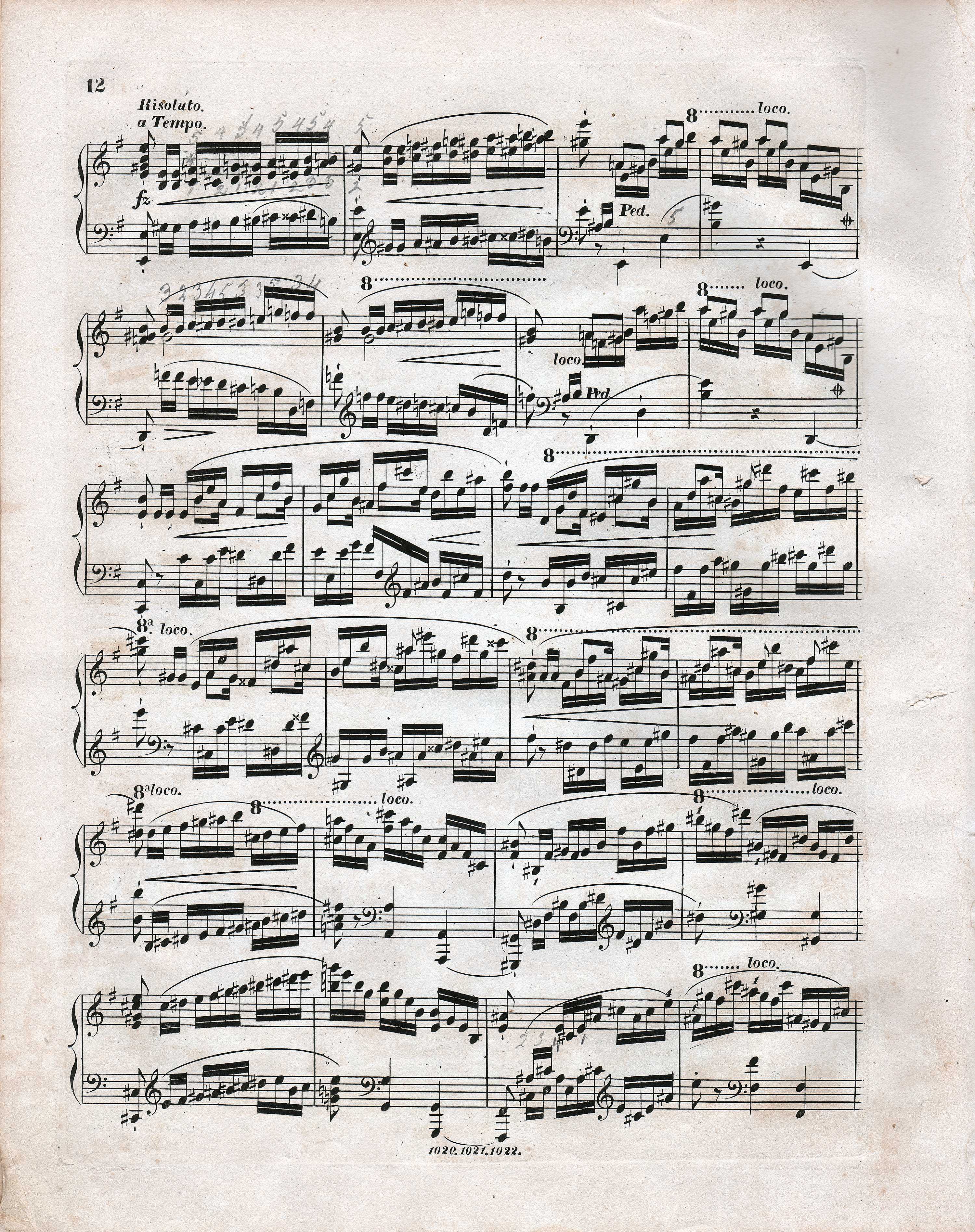



The authenticity of the very entry in FEH is unconfirmed, but the indicated fingering is almost certainly Chopinesque. It is evidenced by the entry in FED in an analogous situation in bar 418, and the same fingering of the 2nd and 3rd beat written into FEFo. The fingering 321 for the repeated notes was also inscribed by Chopin in Waltz in E op. 18 (the initial motif and bar 21). The fingering of the four-note groups of semiquavers is compliant with the distinction of the inner voice indicated by Chopin in each of them. In the editors opinion, it is articulation and actually fingering that were an important, if not the most important, reason to apply this notation, which is indicated by the probably original form of these figures preserved, e.g. in bar 419.
op. 18 (the initial motif and bar 21). The fingering of the four-note groups of semiquavers is compliant with the distinction of the inner voice indicated by Chopin in each of them. In the editors opinion, it is articulation and actually fingering that were an important, if not the most important, reason to apply this notation, which is indicated by the probably original form of these figures preserved, e.g. in bar 419.
Compare the passage in the sources »
category imprint: Differences between sources
issues: Annotations in teaching copies, EE revisions, Annotations in FEH, Annotations in FEFo
notation: Fingering





